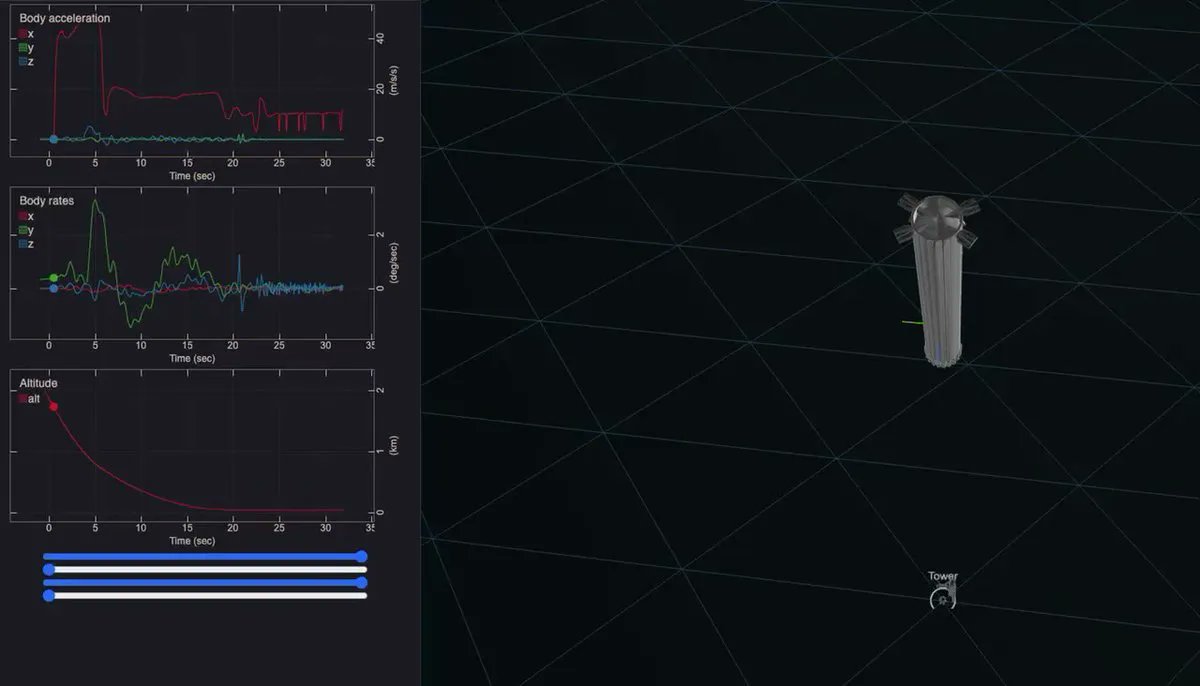SpaceX’s entire business model is based on the reusability of its rockets. That business model has proven viable time and time again as boosters continue to land safely only to be reused later. But as the rockets they’re using get bigger and bigger, the harder and harder it will get for them to land directly on the ground, as models they’ve completed so far have. So for its SuperHeavy Booster, designed to launch its Starship craft into orbit, SpaceX has to develop a new way of capturing the rockets without damaging them. Its head, Elon Musk, has shared a Twitter video showing how it will do just that.
The video, which s only 24 seconds long, shows a computer simulation of a SuperHeavy Booster descending back to Earth after launching its payload into orbit. It’s been viewed 4.3 million times as of the time of writing and has prompted a firestorm of interest online.
Credit – Elon Musk / SpaceX
Like much of what SpaceX has designed so far, the system is unlike any ever seen in reality. The booster itself has four rectangular fins at its top, splayed out like a giant cross outside the circular rocket housing. As it performs its powered descent, it aims between two pincer-like appendages extruding from Starbase, the original launch platform itself.
That’s a pretty tight squeeze and much more challenging to navigate than existing powered descents, which have a landing pad to land on. It’s also very similar to an animation system released by C-bass productions back in November.
Credit – C-bass Productions YouTube Channel
While Starship itself was recently stacked on top of a heavy booster for the first time, and the company recently released a Starship update, hinting that the craft may fly by next month, there’s still a long way to go before this system is fully tested. And there are plenty of people that are questioning the physics and economics of the system already. But if there is one rocketry company that has proven again and again that it can overcome seemingly immense technical challenges to literally get their rocket off (and back on) the ground, it’s SpaceX.
Learn More:
UT – Musk Confirms how “Mechazilla” Will Catch and Assemble Starship and Super Heavy for Rapid Reuse
Teslarati – SpaceX rocket catch simulation raises more questions about concept
Lead Image:
Captured image of the Super Heavy Descent simulation.
Credit – SpaceX


It was interesting how they constrain the analogous Falcon 9 booster final descent phase to mostly one remaining axis of thrust vector control. They don’t want to hit the tower, and the arms give them leeway on the other axis.
SpaceX own statements were that adding legs would be eminently doable. But it would add unnecessary weight and the rationale for the launch platform is to act as “Stage 0” in their terminology, having engine start spark plugs for the majority of engines.
Mechazilla catch-tower would thus act in a similar way by doing away with the legs for Earth return boosters and the majority of Starships. Or so was my understanding.
As for the criticism is is generally useful but the linked one was myopic.
– The trade was done long ago and may or may not stand up. Indeed the simulation was marked with “something like this”.
– SpaceX needs to fix the ramp up bottleneck from 1 development launch tower to the initial 5 they have penciled in thus far (2 in Texas, 3 in Florida). By years end they want the initial test phase over and to start launch every other hour sometime 2023-24. That’s why they are cutting minutes, each booster will have mere hours – or an hour aspirationally in the recent Starship presentation – to turn around. And we know stowing legs can take more time: “the best part is no part”.